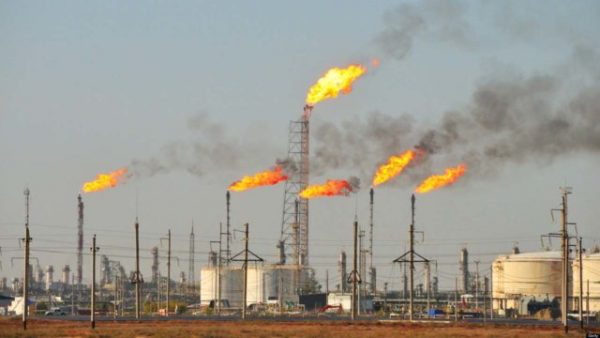 Oil prices rallied more than 2 percent on Thursday, clawing back part of a 6 percent slump triggered by a jump in U.S. crude inventories and record Saudi output, although analysts said sentiment remained bearish.
Oil prices rallied more than 2 percent on Thursday, clawing back part of a 6 percent slump triggered by a jump in U.S. crude inventories and record Saudi output, although analysts said sentiment remained bearish.
A 10.95-million-barrel surge in U.S. crude stockpiles to an all-time high of 482.4 million last week, the biggest gain in 14 years, and Saudi oil production of 10.3 million barrels a day in March battered crude on Wednesday.

But traders said the sell-off had been overdone and some recovery and a rebalancing of positions was understandable after such a sharp fall.
Brent crude LCOc1 was up $1.50 at $57.05 a barrel by 5.37 a.m. EDT, while U.S. crude CLc1 was up $1.25 at $51.67. Both benchmarks dropped around $3.50 on Wednesday.

“Brent fell to the bottom of its $55 to $60 trading range yesterday and has consequently turned higher,” said Carsten Fritsch, senior oil and commodities analyst at Commerzbank.
“Huge volatility has been the name of the game in the past few days,” Fritsch added.
Close-to-close price volatility for Brent is at levels last seen during the height of the global financial crisis of 2008/2009, Reuters data show.
U.S. oil inventories are rising fast as domestic oil production outstrips U.S. demand and the ability of U.S. refiners to process crude oil.
Cushing, the delivery point for U.S. crude oil futures contracts, is now filled to 85 percent of its total working capacity of 70.1 million barrels, industry analysts estimate.
“Total U.S. crude stocks continued to fly far above five-year highs, setting new records every week,” Societe Generale analysts said in a note to clients.
Investor sentiment remains bearish, analysts say, due to persistent high production and modest demand that has knocked oil prices down around 50 percent since June last year.
Key oil producers in the Organization of the Petroleum Exporting Countries are pumping more than required, industry data show, and Iran may be about to increase sharply its oil output if it can agree final nuclear deal to end sanctions.
Iran and Western powers are working toward a nuclear deal by June 30 which could end sanctions on Iranian oil exports.
Iranian oil minister Bijan Zanganeh told Reuters in Beijing on Thursday that OPEC would “coordinate itself” to accommodate Iran’s return to oil markets without causing a price crash.
OPEC members should discuss production levels before June’s meeting, Zanganeh said.
 MMS PLUS NG – Maritime, Aviation, Business, Oil and Gas News Online Newspaper with coverage in Maritime, Oil and Gas, Aviation, Power and Energy as well as Financial News
MMS PLUS NG – Maritime, Aviation, Business, Oil and Gas News Online Newspaper with coverage in Maritime, Oil and Gas, Aviation, Power and Energy as well as Financial News









